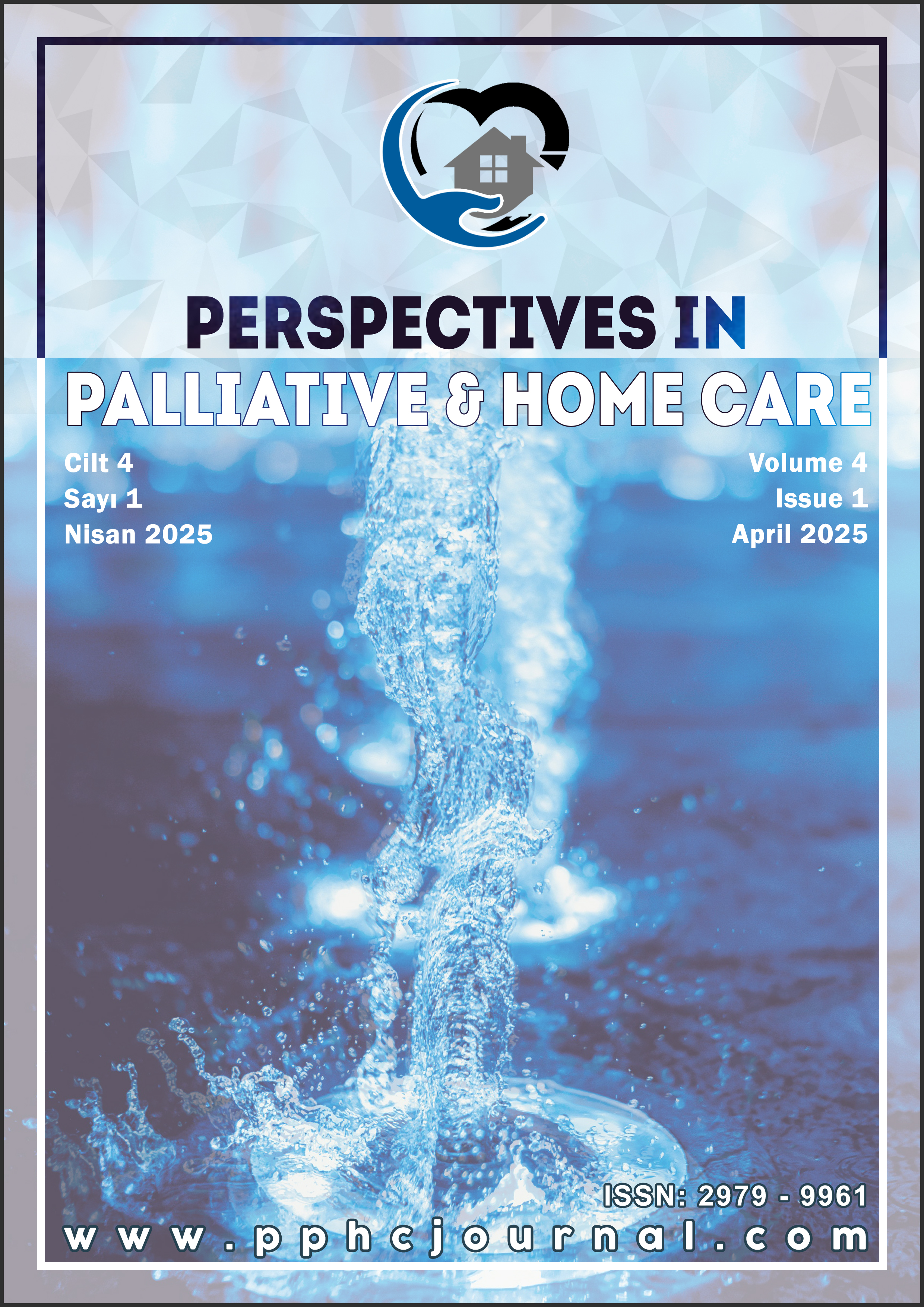Author :
Abstract
Giriş/Amaç: Bu araştırma, hemşirelik öğrencilerinin palyatif bakıma yönelik bilgi düzeyleri ve etik duyarlılıklarının belirlenmesi amacıyla yapılmıştır.
Gereç ve Yöntem: Araştırma kesitsel ve ilişkisel olarak bir kamu üniversitesinde eğitim gören hemşirelik birinci sınıf öğrencileriyle kartopu örnekleme yöntemiyle, 15 Haziran-15Ağustos 2024 tarihleri arasında 116 öğrenci ile yapıldı. Araştırma verileri “Öğrenci Tanıtıcı Özellikleri Formu”, “Palyatif Bakım Bilgi Düzeyi Ölçeği” ve “Hemşirelik Öğrencileri İçin Etik Duyarlılık Anketi” ile Google formlar aracılığıyla online olarak toplandı. İstatiksel analizlerde ortalama, standart sapma, sayı ve yüzde ile normallik dağılımı dikkate alınarak, bağımsız gruplar t testi ve tek yönlü ANOVA analizleri kullanıldı.
Bulgular: Öğrencilerin yaş ortalaması 20.10±2.03 yıl, %75’i kadın, %61.2’si palyatif hastaya bakım vermediği, %66.4’nün palyatif bakım dersi, %70.7’sinin etik dersi aldığı belirlendi. Palyatif bakımda; tutum ve davranışlara yönelik sorularda (1-7. Sorular) doğru yanıt oranının %75.9-95.7 arasında, bilgiye yönelik sorularda (8.-11. Soru) doğru yanıt oranının %36.2-42.2 arasında olduğu görüldü. Öğrencilerin etik duyarlılık puan ortalaması 24.98±9.25; bireye saygı alt boyut puan ortalaması 13.97±5.18, adalet ve gizlilik alt boyut puan ortalaması 11.00±4.26 olduğu belirlendi. Öğrencilerin etik duyarlılıklarının cinsiyetten etkilenmediği (p>0.05), palyatif bakım ve etik dersi alma ile palyatif hastaya bakım verme durumlarından etkilendiği belirlendi (p<0.05).
Sonuç: Araştırmaya katılan öğrencilerin palyatif bakıma yönelik tutumlarının iyi, bilgi düzeylerinin düşük, etik duyarlılıklarının ise orta düzeyde olduğu belirlendi. Hemşirelik müfredatına palyatif bakım ve etik eğitiminin ilk yıllardan itibaren entegrasyonu önerilmektedir.
Keywords
Abstract
Background/Objective: This research was conducted to determine the knowledge levels and ethical sensitivities of nursing students regarding palliative care.
Material and Methods: The cross-sectional and relational study was conducted with 116 nursing students studying at a public university using the snowball sampling method between June 15 and August 15, 2024. The research data were collected online via Google forms using the “Student Identifier Characteristics Form”, “Palliative Care Knowledge Level Scale” and “Ethical Sensitivity Survey for Nursing Students”. In statistical analyses, independent groups t-test and one-way ANOVA analyses were used, taking into account mean, standard deviation, number and percentage, and normality distribution.
Results: The mean age of the students was 20.10±2.03 years, 75% were female, 61.2% did not provide care to palliative patients, 66.4% took a palliative care course, and 70.7% took an ethics course. In palliative care; it was seen that the correct answer rate for questions about attitudes and behaviors (Questions 1-7) was between 75.9-95.7%, and for questions about knowledge (Questions 8-11) was between 36.2-42.2%. The mean ethical sensitivity score of the students was 24.98±9.25; the mean score for the respect for the individual sub-dimension was 13.97±5.18, and the mean score for the justice and confidentiality sub-dimension was 11.00±4.26. It was determined that the ethical sensitivities of the students were not affected by gender (p>0.05), but were affected by taking palliative care and ethics courses and providing care to palliative patients (p<0.05).
Conclusion: It was determined that the students participating in the study had good attitudes towards palliative care, low knowledge levels, and moderate ethical sensitivity. It is recommended to integrate palliative care and ethics education into the nursing curriculum from the first years.





